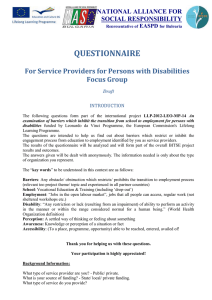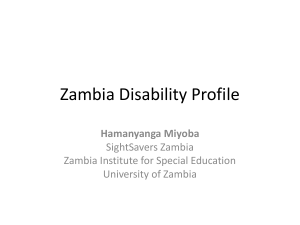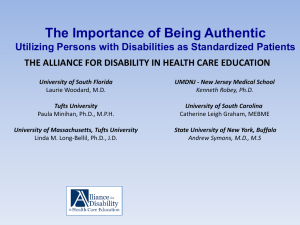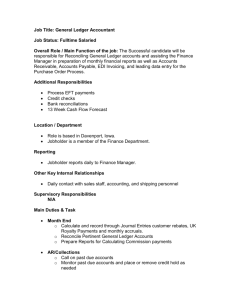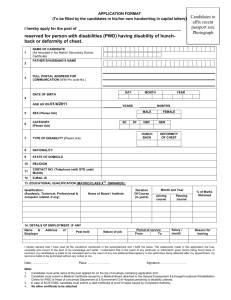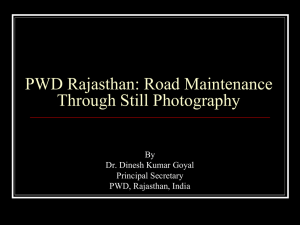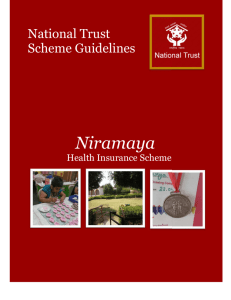3rd Annual Chief Ben Thompson Law Enforcement Symposium
advertisement
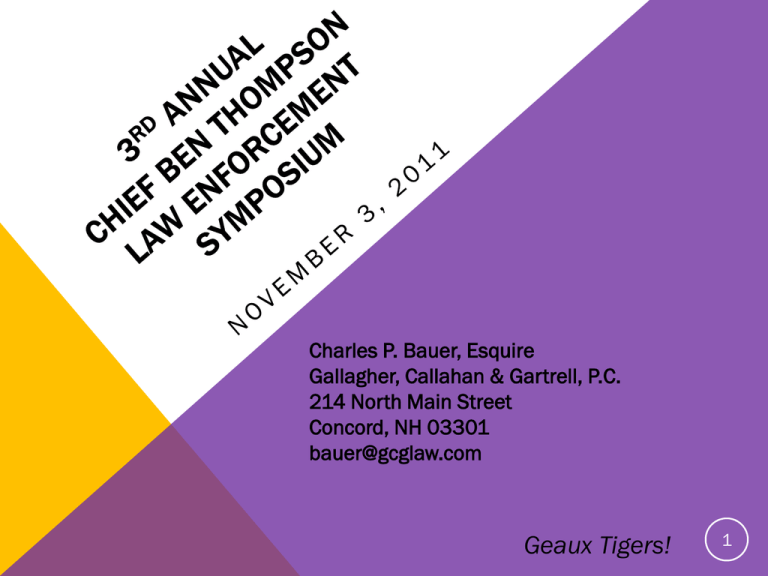
Charles P. Bauer, Esquire Gallagher, Callahan & Gartrell, P.C. 214 North Main Street Concord, NH 03301 bauer@gcglaw.com Geaux Tigers! 1 2 COMMON PROBLEMS TO LAW ENFORCEMENT Persons with disabilities (PWD) Emotionally disturbed individuals (EDI) Primary goals 1. Serve & provide equal & impartial police services to PWD/EDI 2. Protect PWD/EDI from inequitable treatment based on disability 3. Accommodate PWD/EDI without jeopardizing safety 3 AMERICANS WITH DISABILITIES ACT & NH LAW ADA – Title II – 1990 federal law protects PWD RSA 354-A – NH state law protects PWD Equal opportunity to gov’t services (i.e. police services), employment, public accommodations, transportation, telecommunications 4 DEFINITIONS Disability – physical or mental impairment Substantially limits 1 or more major life activities OR is regarded / perceived as having a disability 5 POLICIES & TRAINING – PWD/EDI Written policies Training – with experts Sensitivity & awareness Communication & assistance with supervisors Report writing Failure to train / supervise 6 PROTECTIVE CUSTODY RSA 135-C:28, III Probable cause Demonstrated immediate danger of injury to self or others Medical referral, mental health referral, or arrest Official & Qualified Immunity 7 ARREST & DETENTION - EDI/PWD Totality of the Circumstances – mental state is 1 factor Probable Cause / reasonable suspicion – articulate & report facts Official & Qualified Immunity 8 ARREST & DETENTION - EDI/PWD cont’d Visually impaired Mobility impaired Hearing & Speech impaired “Undue financial burden” 9 USE OF FORCE – EDI/PWD Graham factors: 1. Severity of crime at issue 2. Poses an immediate threat to safety 3. Actively resisting 4. Attempting to evade arrest by flight 10 USE OF FORCE – EDI/PWD cont’d When dealing with PWD, consider whether particular control/restraint tactic is more dangerous/unreasonable in light of disability Can steps be taken to accommodate the disability w/o jeopardizing safety? 11 USE OF FORCE – EDI/PWD cont’d PWD/EDI - Demonstrates Threatening Conduct Police officers may/must respond appropriately to real & immediate threats to safety, even if the result of disability or emotional disturbance Important - trained to distinguish between conduct that creates real and immediate threat to safety Important – conduct resulting from a disability not be criminalized where no crime committed 12 BEST PRACTICES Take time to asses situation De-escalate Calming attitude-speech & actions – sirens, lights, crowd Stay non-judgmental & non-threatening Do not threaten arrest, weapons, conviction Open 2-way communication Avoid certain topics 13 BEST PRACTICES cont’d Allow person to vent Do not approach too quickly or too soon – move slowly – do not excite Provide assurance of support & assistance Try to be truthful Consider options Request back up Communicate with Supervisor 14 15



